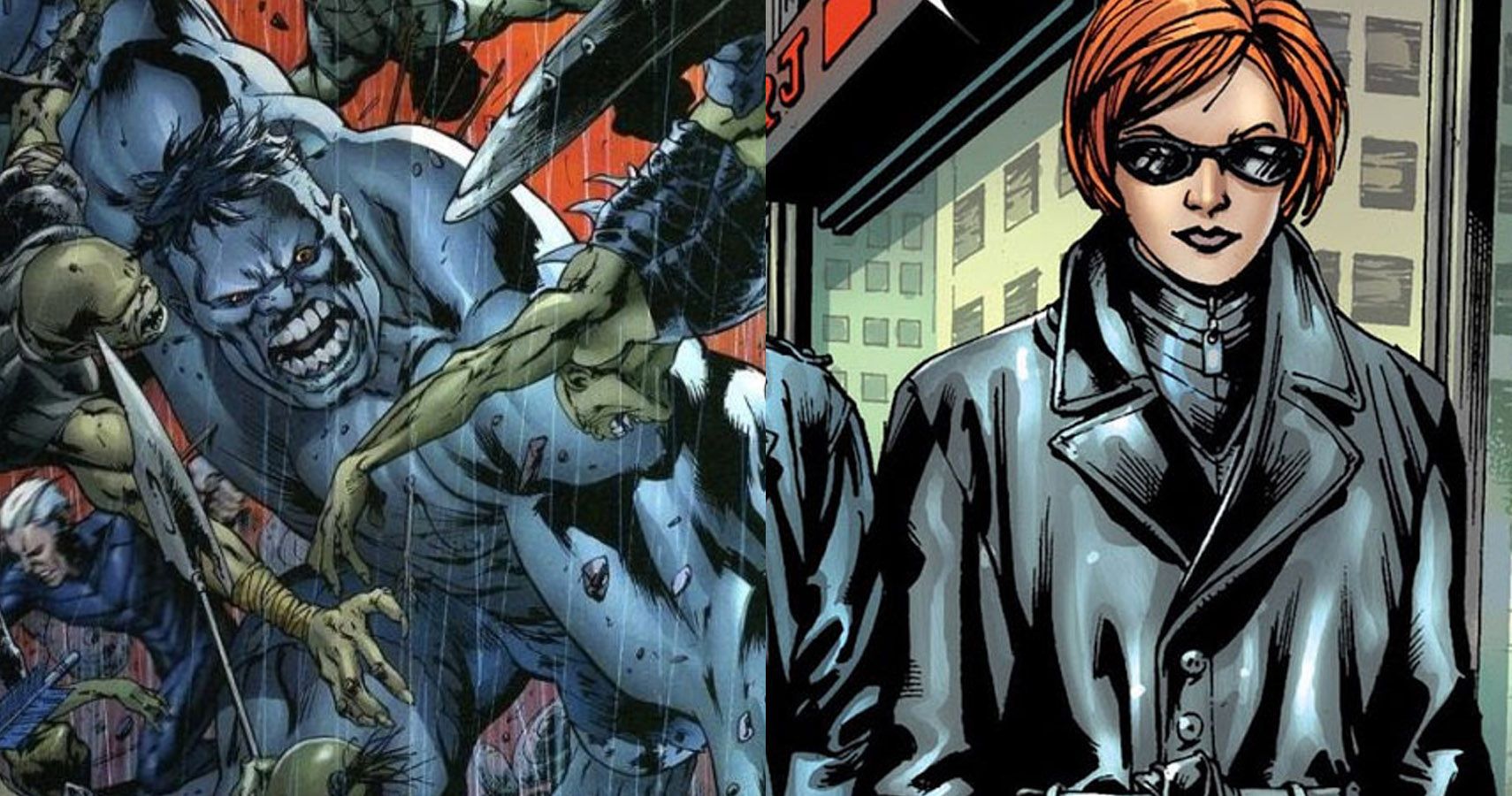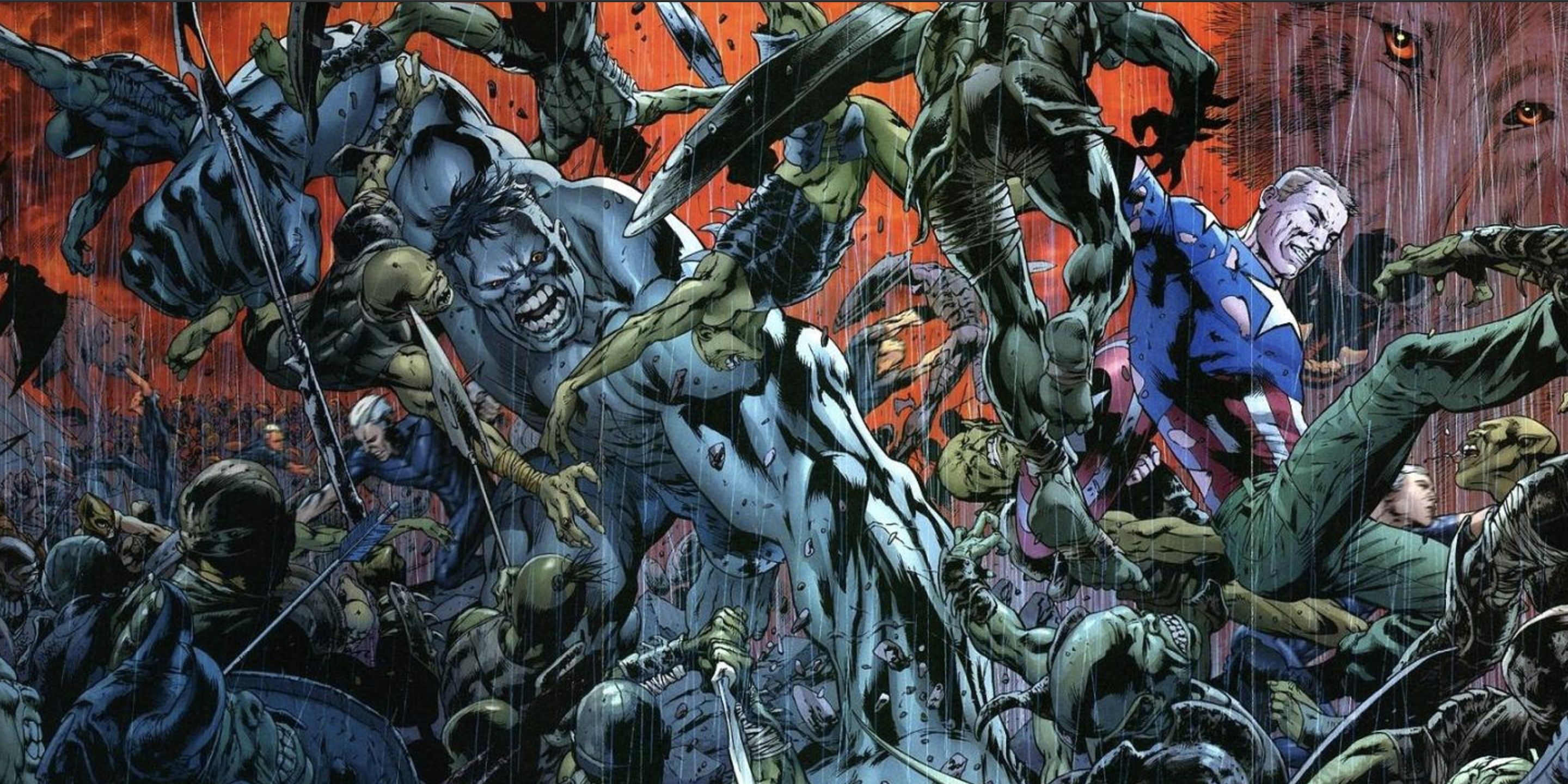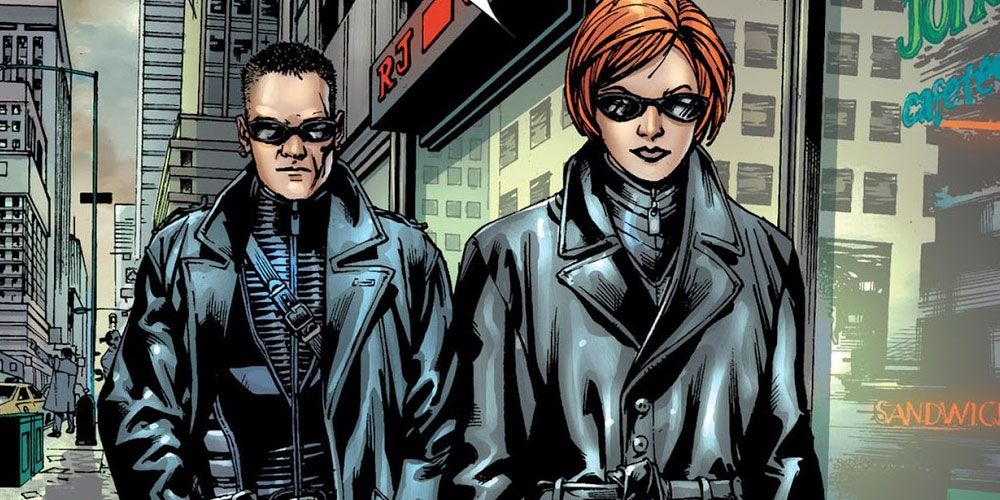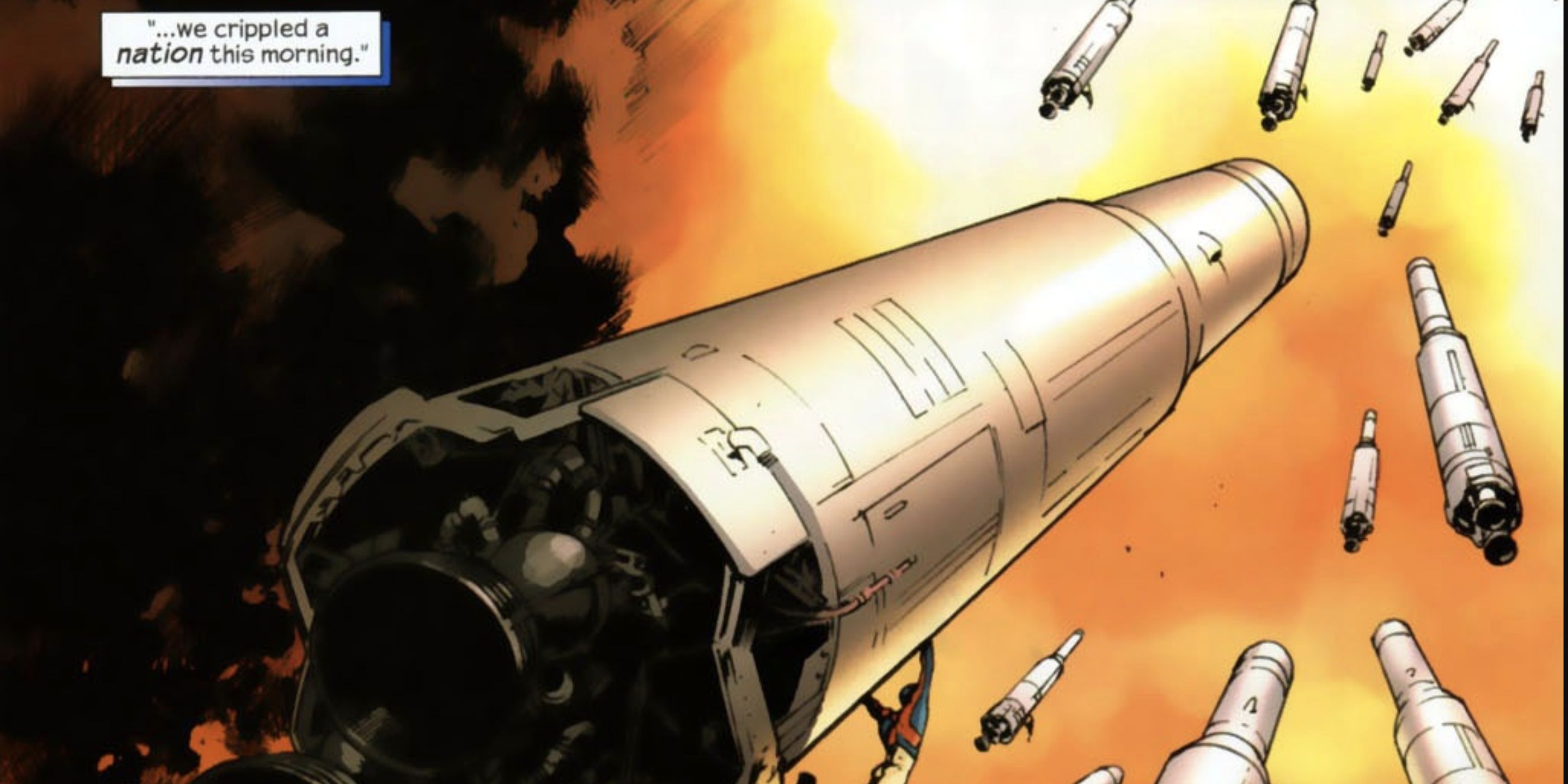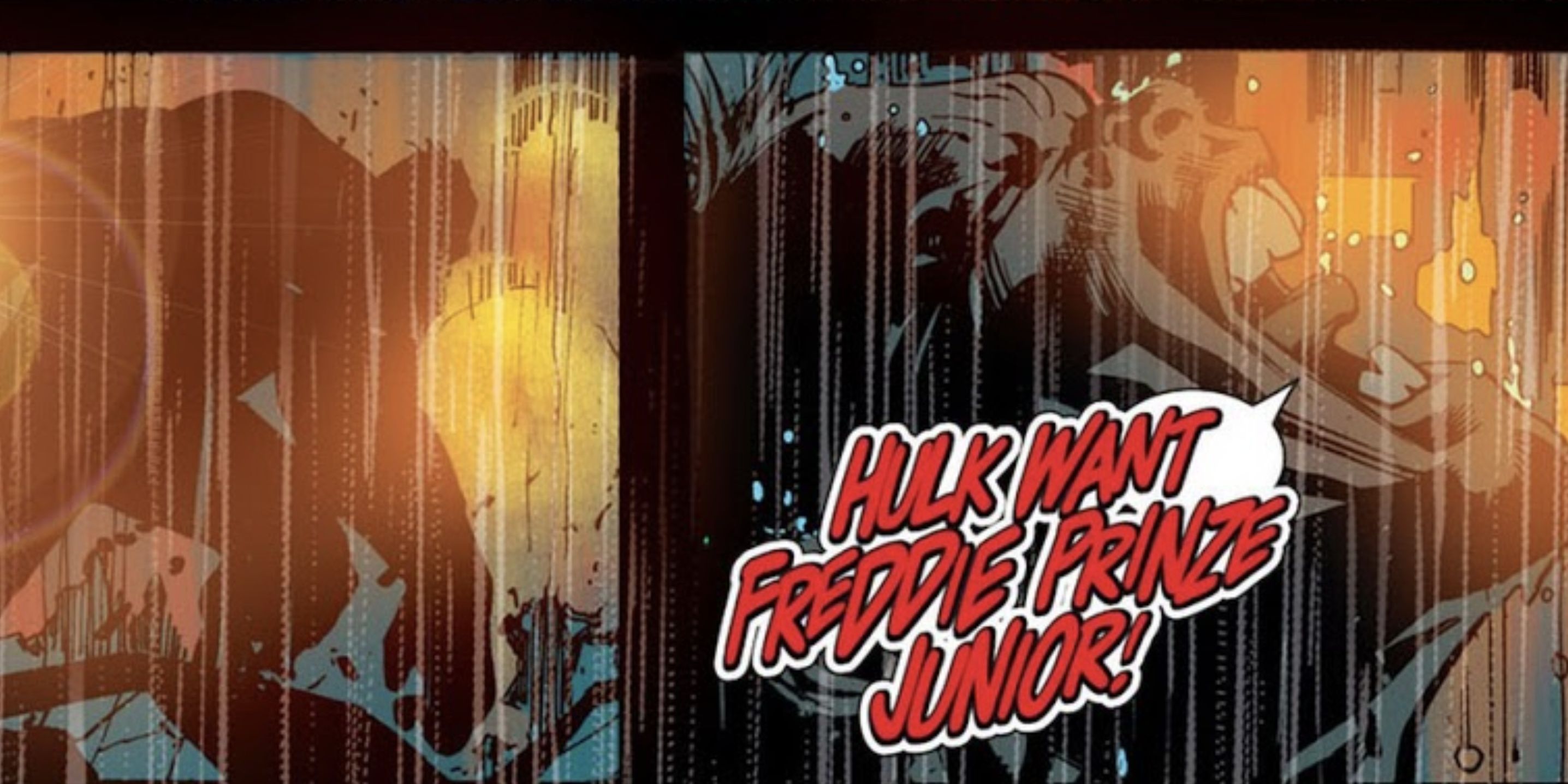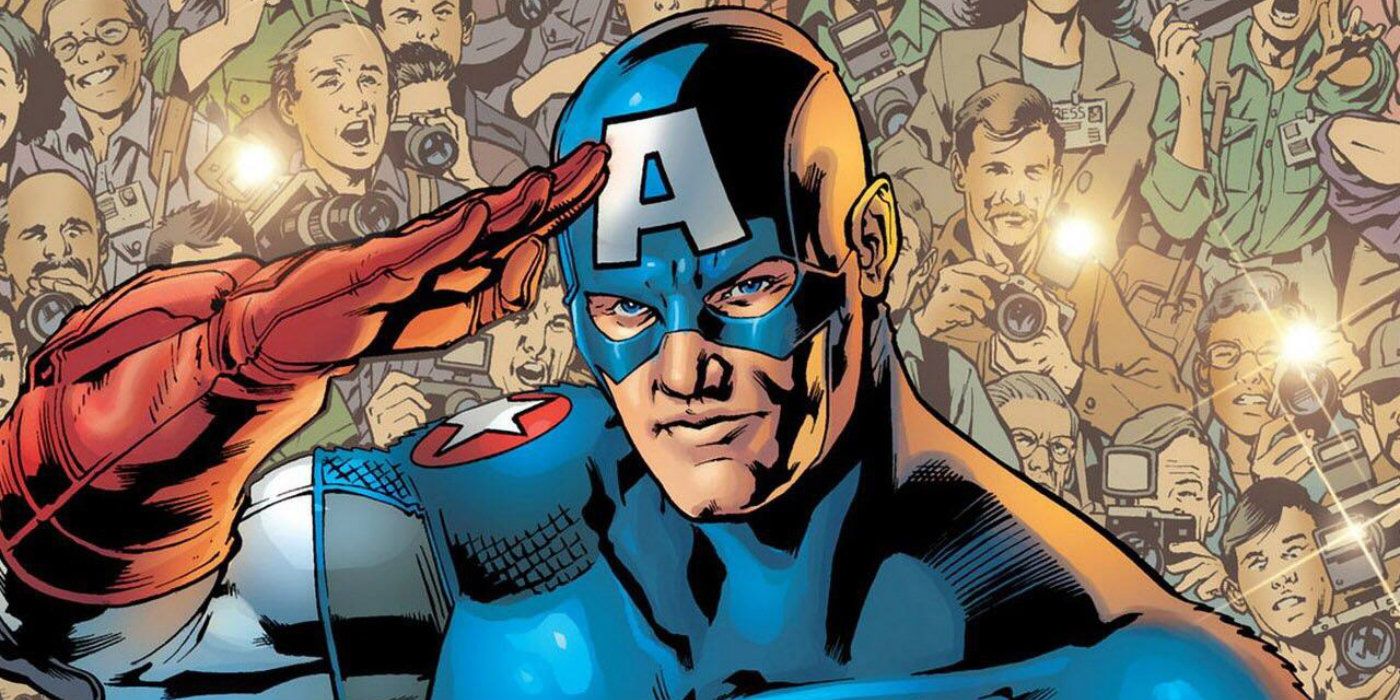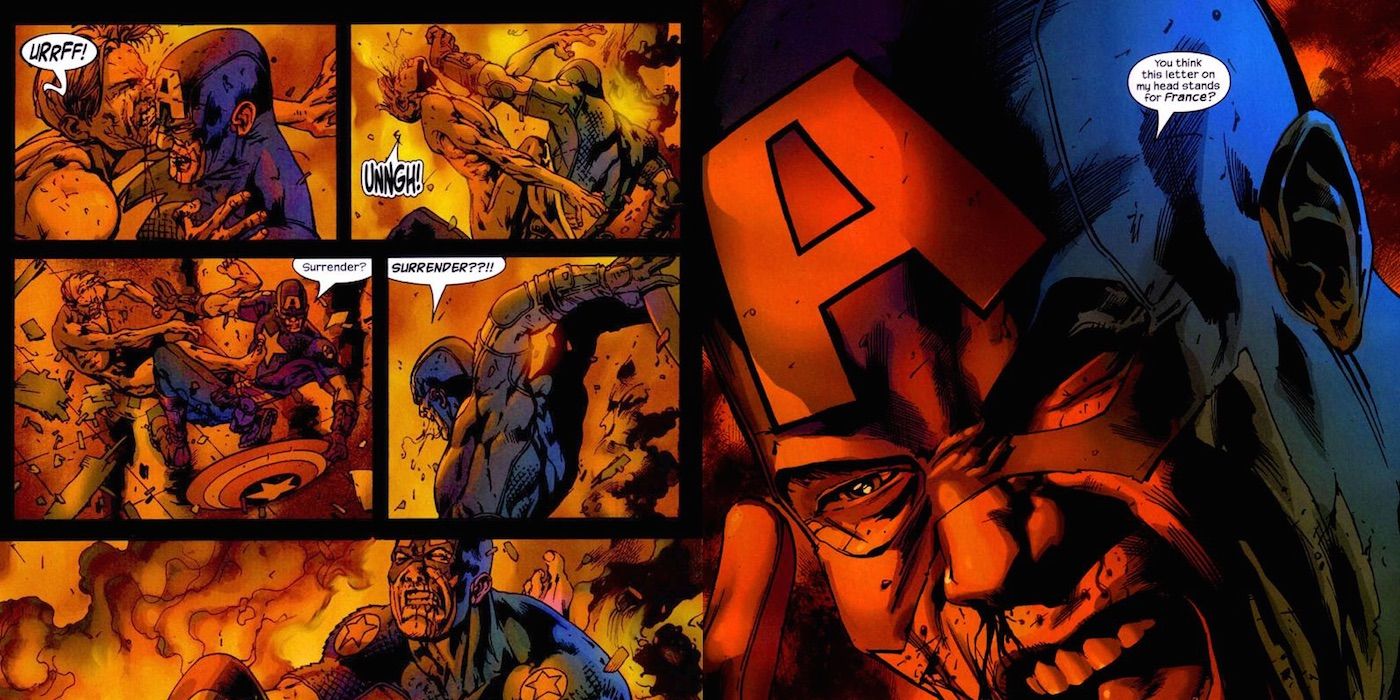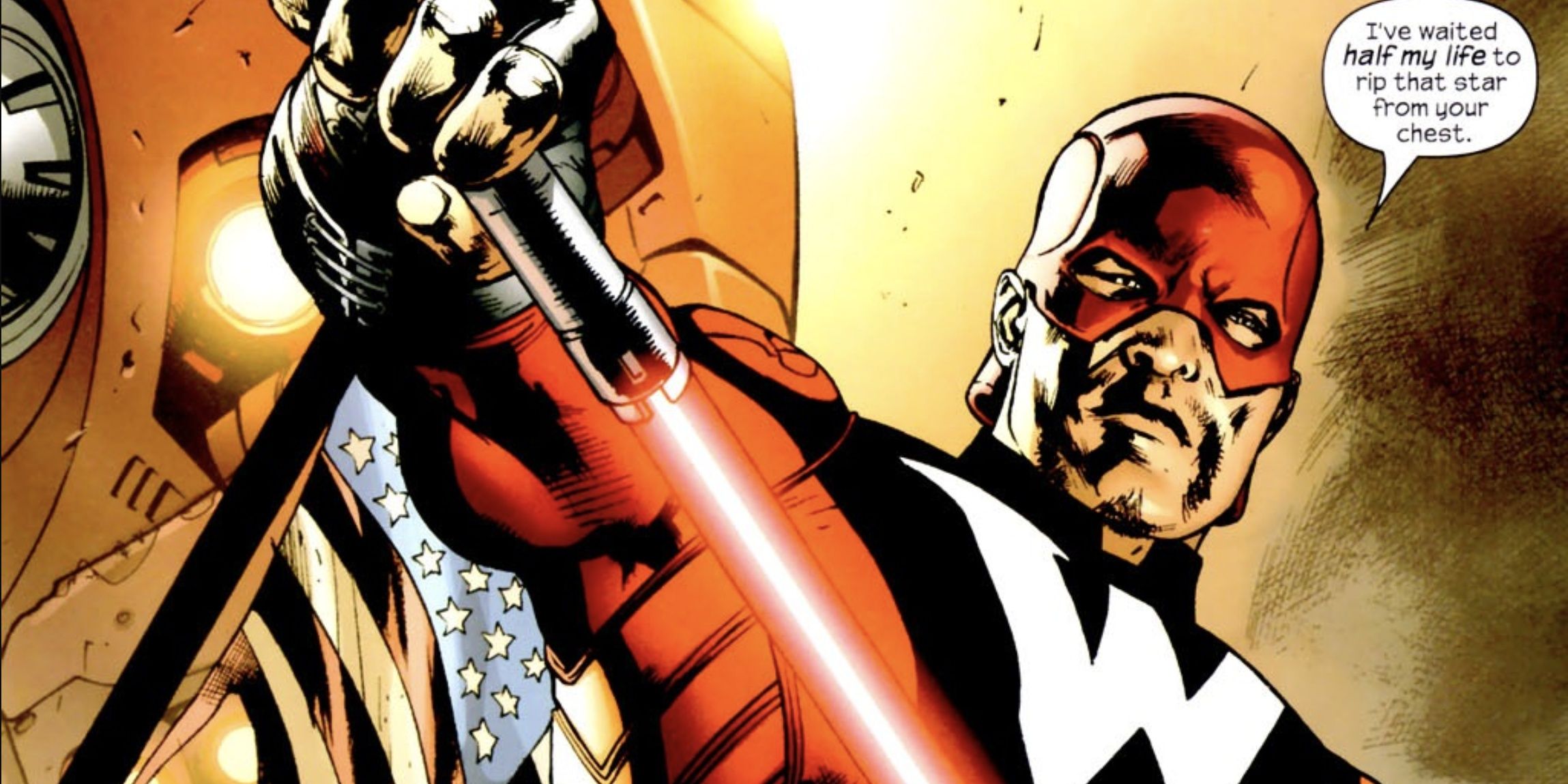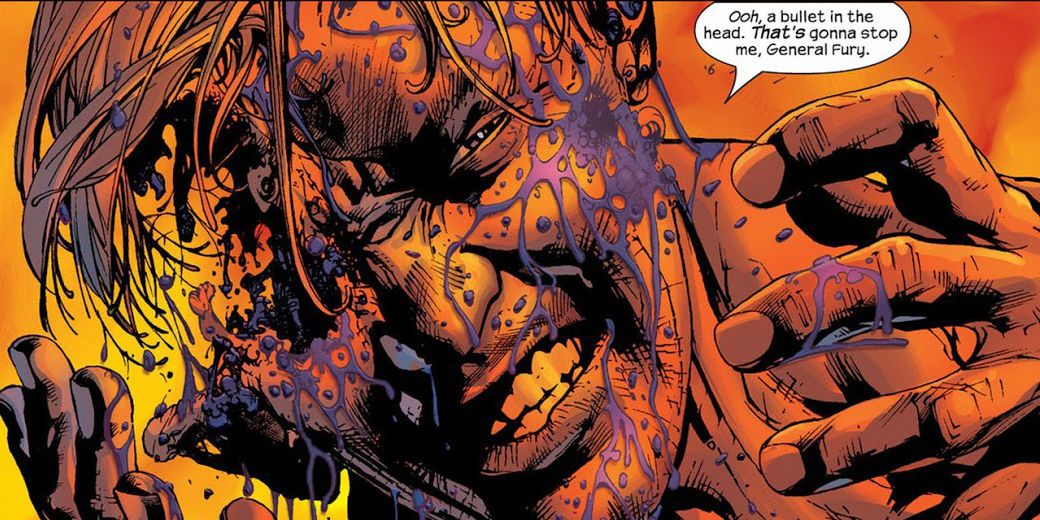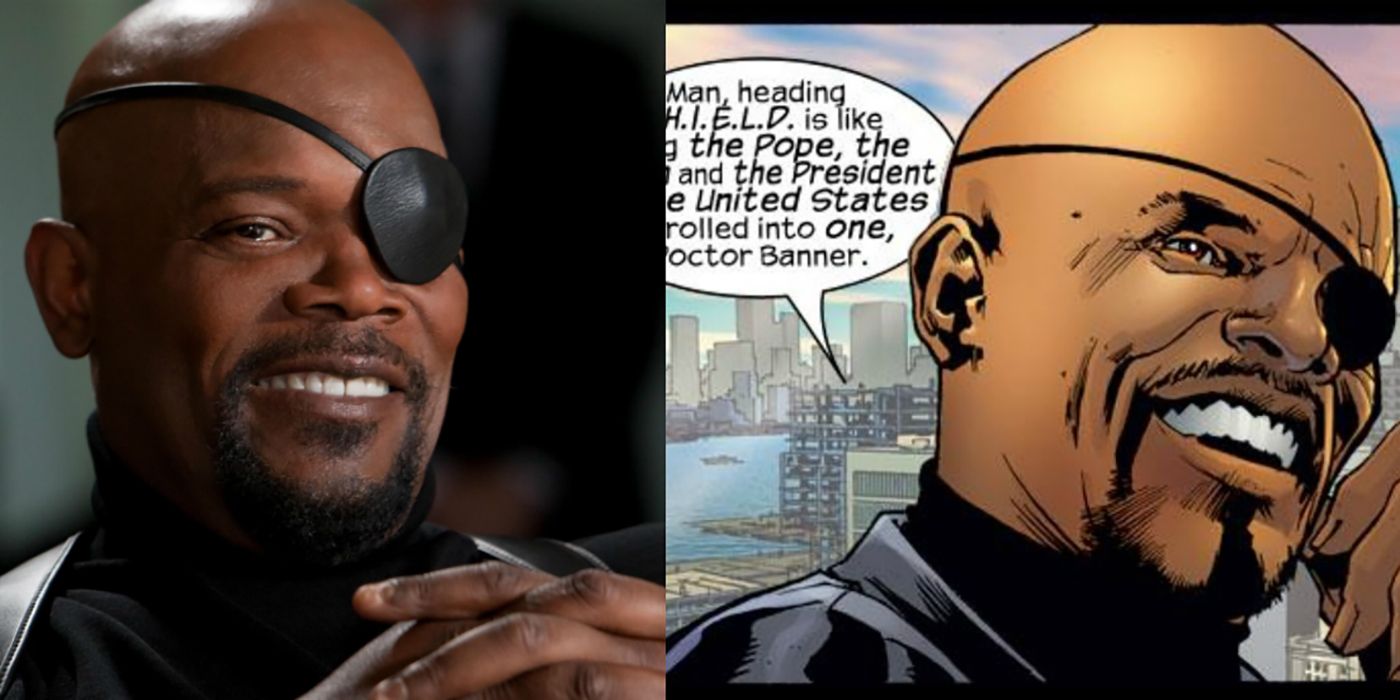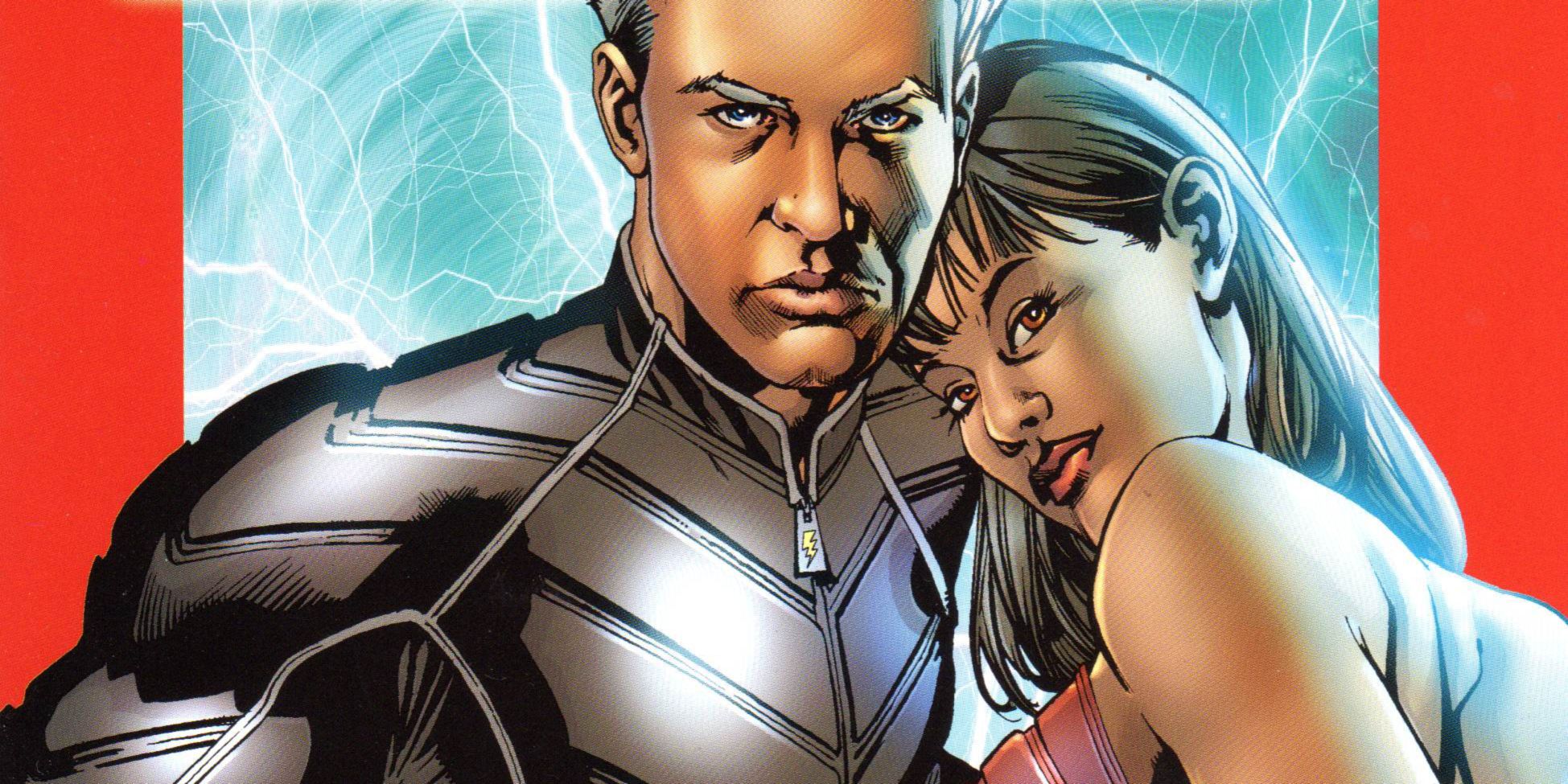When Mark Millar and Bryan Hitch brought the Avengers into the Ultimate Marvel universe, they went further than their contemporaries. While Ultimate Spider-Man and Ultimate X-Men merely updated their characters and their settings for the turn of the millennium, the Avengers were renamed the Ultimates and reimagined as a SHIELD strike force.
RELATED: Marvel's Infinity: 5 Things That Aged Well (& 5 That Didn't)
The Ultimates' first two volumes were hardly a conventional superhero tale, taking as much inspiration from the Avengers comics penned by Stan Lee and Roy Thomas as it did from Watchmen, particularly with the centering of contemporary geo-politics into the narrative and titular characters being so cynical they could barely be called "heroes." Almost 20 years on, let's look at how The Ultimates has aged.
10 Aged Well: Bryan Hitch's Art
The Ultimates is often described as a "blockbuster," and Bryan Hitch's artwork is the main reason why. Like The Ultimates' sister books, Hitch used decompressed storytelling in his art, but he also brought unique photo-realism and epic scale. The uniformly beautiful splash pages stand out the most, particularly the eight-page fold-out in Ultimates 2 #13 depicting the Ultimates in battle with Loki's forces. No comic had ever looked so distinctly cinematic before, so it's hardly a surprise The Ultimates wound up the greatest aesthetic inspiration for the MCU.
9 Hasn't Aged Well: Costume Design
While Hitch's art still looks both gorgeous and epic to this day, some of the costume designs used for the characters haven't. The Ultimates is a work of its time, and the biggest aesthetic giveaway of this is the rather uniform, leather outfits worn by the titular superheroes. The Avengers trinity emerge mostly unscathed, their suits using the classic designs as inspirations for more modern looks, but the rest of the team often look more at home in The Matrix, much of their personality stripped away in the process.
8 Aged Well: Political Commentary
In reality, the Avengers would never exist without state approval, and both volumes work onwards from this notion whilst critiquing the contemporary foreign policy of the US government in the process. Volume 1 featured a George Bush the lesser cameo, while in Volume 2 the Ultimates invade Azerbaijan to disarm a nascent nuclear program, prompting international backlash from countries aware such deployment is only the beginning.
RELATED: 10 Times The Ultimates Nailed The Avengers (And 9 Things It Got Wrong)
Thus, a coalition of countries create their own super-team, dubbed the Liberators, to lead an invasion of America. Putting America on the receiving end of regime change and using superheroes as an analogue for WMD's may not be the sort of provocative political story you'd expect opening a Marvel comic, but with the America government's continued involvement in the Middle East, it's just as vital of one.
7 Hasn't Aged Well: Pop Culture References
While The Ultimates' critique of the Bush administration gives the story a needed edge and remain relevant so long as American imperialism continues, the appearance by individual political figures dates the text. This latter problem is exacerbated by both volumes' continued pop culture references; scenes of the Hulk screaming for the head of Freddie Prinze Jr. after he discovers Betty Ross is on a date with the movie star, or an earlier moment of the Ultimates fan-casting a movie of themselves, have aged like milk.
6 Aged Well: Character Re-imaginations
Ultimate Marvel set out from the beginning to be more grounded than the original universe, and with that came deconstructions of the headlining heroes. Ultimate Captain America has the political values one would reasonably expect a white man from 1940s America to have, jingoism with a side-order of sexism and homophobia, a far cry from the progressive paragon of Mainstream Marvel. The Ultimates' Bruce Banner willingly chooses to become the Hulk after feeling emasculated by both his teammates and Betty Ross, while Thor is an anarchist with a group of politically-active followers, not unlike a certain other son of God. In any case, one certainly can't accuse Millar of not trying to break new ground with the characters.
5 Hasn't Aged Well: A-hole Avengers
As interesting as the character deconstructions were, it often made the Ultimates hard to like. The Ultimates exacerbated the worst traits of its characters; unlike 616 Hank Pym, a flawed but heroic man, Ultimate Giant Man was a loathsome domestic abuser, as demonstrated in Volume 1's most harrowing scene.
Black Widow and Hawkeye were career assassins, Quicksilver and Scarlet Witch hadn't discarded the Mutant supremacist beliefs they'd held in the Brotherhood, and Cap was not only politically reactionary but also aggressive and pig-headed. Wasp, Thor, and Stark came out looking the best, but even they had their moments.
4 Aged Well: The Colonel
The best villain of either Ultimates volume is Colonel Abdul Al-Rahman, an Azerbaijani teen who witnessed the Ultimates' invasion of his country then volunteered for a super-soldier experiment, an origin mirroring Captain America's own. His character personifies the pointed critique of Ultimates 2 about America's heroic self-image and the consequences of its resultant misadventures abroad. The Colonel's words even seem to sink into Cap, given Volume 2 ends with the Ultimates distancing themselves from SHIELD, deciding they can't allow themselves to be its tools any longer.
3 Hasn't Aged Well: Other Villains
Unfortunately, the Colonel is something of an anomaly compared to the rest of the villains in either Ultimates volume. The Chitauri were a pale imitation of the Skrulls and while the youthful Loki of Ultimates 2 may have been the visual inspiration for Tom Hiddleston's MCU portrayal he lacked any of the onscreen version's charm or complexity. Most disappointing of all is the Colonel's fellow Liberators, who lack their leader's sympathetic motivations and are simply a gang of psychopaths swiftly eliminated by their American counterparts.
2 Aged Well: Samuel L. Jackson Nick Fury
The one casting suggestion from Issue #4 that panned out was Samuel L. Jackson as Nick Fury. The SHIELD director had been depicted as a middle-aged caucasian throughout Marvel history, but Millar and Hitch modeled their take on Fury after "the world's coolest guy," as Millar described Jackson.
RELATED: The Ultimates: 10 Most Powerful Members Of The Ultimate Universe’s Avengers, Ranked
Unknown to them, Jackson is a comic fan and discovered their use of his likeness, agreeing not to take action on the condition that Marvel cast him as Fury in any forthcoming movies. Thus, Jackson portrays Nick Fury throughout the MCU and his appearance has become the default for Fury in all portrayals since.
1 Hasn't Aged Well: Mutant Twins Relationship
The Ultimates took many liberties with Earth's Mightiest Heroes, but the only indefensible one is the relationship between Quicksilver and Scarlet Witch. Both Ultimates volumes hint that the two's relationship goes beyond a sibling bond; they share afternoons in Venice reading poetry aloud and sipping champagne, while Pietro is noticeably jealous whenever Wanda looks at another man (or android). Beyond misinterpreting the characters, it's downright offensive to anyone with good taste, and is worsened since, when Jeph Loeb wrote Ultimates 3, he bafflingly jettisoned subtext and showed the twins as being "in-love."
NEXT: 10 Reboots That Improved Superheroes (And 10 That Did The Opposite)

